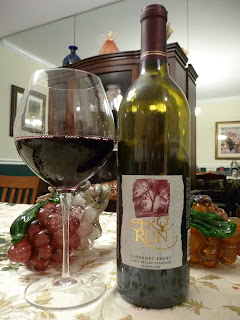Almost all of the "Chef Bolek Original" recipes are posted after I have made them for the first time. There is no test kitchen. There are no repeats to see if I can do a better job. Some recipes are complete disasters, and, those never see the light of day. Other recipes are okay, and, I usually post them with a few caveats. And, every one in a while, I have a very successful Chef Bolek Original.
Recently, I was trying to think of recipes for what we had in our refrigerator. One thing that caught my attention was the bowl full of grated Parmigiano Reggiano. I knew of various recipes for Parmesan Crisps, but, I had way too much grated cheese to make crisps.
So then my mind turned to a "flatbread" made entirely of Parmigiano Reggiano. This idea was both intriguing and risky. I had never heard of a "flatbread" made of anything other than bread. Yet, Parmigiano Reggiano is rather salty, which means that you would need to make sure whatever tops the "flatbread" can offset the saltiness of the cheese. Ultimately, I decided to plate a salad, with porchini mushrooms and slices of heirloom tomatoes. I also decided that I would put slices of ribeye on top as well.
Overall, this dish turned out well. The one thing that I did not add to this recipe that I would definitely add the next time I make it is a good drizzle of aged balsamic vinegard. The fruitness of the vinegar will offset the saltiness of the cheese very well.
PARMIGIANO REGGIANO "FLATBREAD" WITH RIBEYE
PORCINI AND HEIRLOOM TOMATOES
A Chef Bolek Original
Serves 3-4
Ingredients:
1 grass-fed ribeye steak, about 1 pound
2 cups of mixed greens
1/2 to 1 heirloom tomato
1/4 to 1/2 cup of dried porcini mushrooms
2 cups of chicken broth
2 tablespoons of Sangiovese wine
2 cloves of garlic, diced finely
1 tablespoon of fresh rosemary, chopped finely
2 teaspoons of dried thyme
1/2 teaspoon of crushed red pepper
Finely grated Parmigiano Reggiano
Sea salt, to taste
Ground black pepper, to taste
Directions:
1. Prepare the marinade for the steak. Add the red wine, garlic, rosemary, 1 teaspoon of the dried thyme, 1/4 teaspoon of crushed red pepper to a bowl. Add the ribeye and make sure that it is coated with the mixture.
2. Rehydrate the Mushrooms. Heat the chicken broth over medium heat. Once the broth is heated, add the dried porcini mushrooms to rehydrate. After about five minutes strain the mushrooms and set aside.
3. Cook the steak. Cook the ribeye under the broiler for about eight to ten minutes per side or until cooked to the desired doneness. Let the steak rest for fifteen minutes.
2. Rehydrate the Mushrooms. Heat the chicken broth over medium heat. Once the broth is heated, add the dried porcini mushrooms to rehydrate. After about five minutes strain the mushrooms and set aside.
3. Cook the steak. Cook the ribeye under the broiler for about eight to ten minutes per side or until cooked to the desired doneness. Let the steak rest for fifteen minutes.
4. Make the Parmigiano Reggiano flatbread. Line a cooking tray with parchment paper. Brush the paper with extra virgin olive oil. Place a spoonful of the grated Parmigiano Reggiano in the middle of the paper and use the spoon to gently spread out the cheese until it is a consistent thickness. Repeat along the edges of the cheese until you have reached the desired size of the flatbread. Sprinkle the remaining thyme and crushed red pepper over the cheese. Add the cheese to the oven. Cook until golden brown, anywhere from five to ten minutes depending upon the size of the "flatbread."
5. Plate the dish. Prepare the "flatbread" by placing it on a plate. Place the mixed greens in the middle of the "flatbread." Sprinkle the mushrooms and tomatoes over the greens. Slice the ribeye and place slices over the greens.
PAIRING THIS RECIPE
The principal component of this dish is two-fold: ribeye steak and the Parmigiano Reggiano flatbread. Given Parmigiano Reggiano is perhaps one of the signature foods of Emilia-Romagna, I think that the most appropriate pairing for this dish is a wine from that region. A Sangiovese di Romagna is very much like a Tuscan Sangiovese, which can stand up to not only the "flatbread," but also the steak, which has been flavored with a marinade that draws from the flavors of Tuscany, such as rosemary and garlic. The wine belows is one Sangiovese di Romagna that I have previously reviewed.
Collina dei Lecci -- Sangiovese di Romagna Reserva (2004).
85% Sangiovese, 15% other
Emilia Romagna, Italy
Flavors of cherries and raspberries
ENJOY!
































